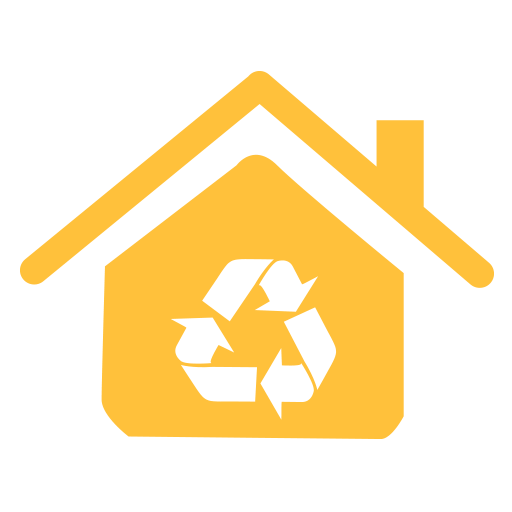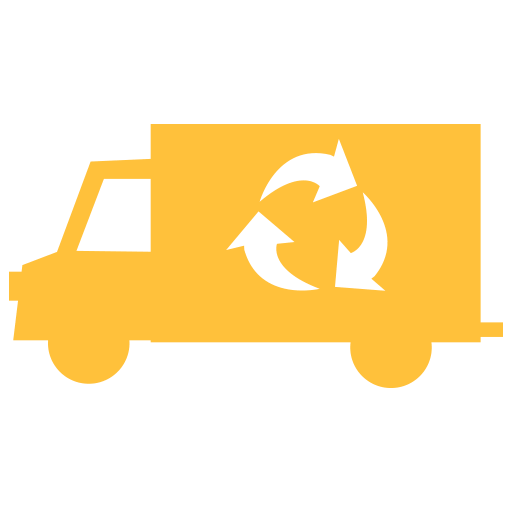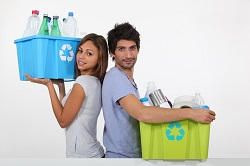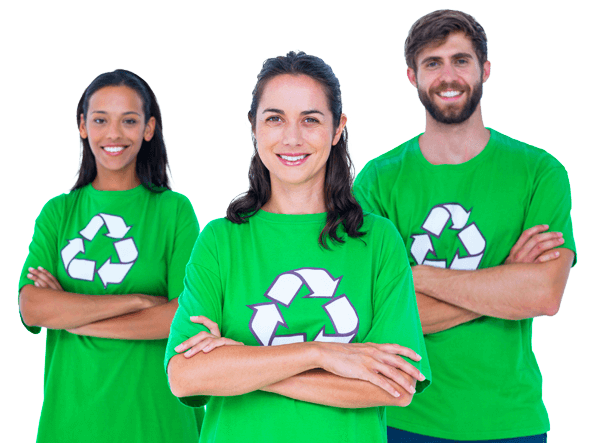Cardboard: Transforming Disposal into Opportunity
Posted on 05/11/2025
Cardboard: Transforming Disposal into Opportunity
Introduction
Cardboard is an indispensable component of modern life. Whether used for packaging, shipping, or creative purposes, cardboard continues to shape industries and homes worldwide. However, as online shopping and global distribution systems expand, we also generate mountains of cardboard waste. This begs the question: Can cardboard disposal be turn - into an opportunity rather than just another environmental challenge?
In this comprehensive article, we'll explore how cardboard transformation is revolutionizing waste management. We will uncover innovative approaches, the immense potential for recycling, creative reuse, and how businesses and individuals can benefit from treating old cardboard as a valuable resource rather than just rubbish.

Understanding the Ubiquity of Cardboard
Cardboard in Modern Packaging
*Cardboard* is everywhere--protecting shipments, securing fragile goods, and making up the bulk of retail packaging. Its widespread use is due to its lightweight, affordable, and recyclable nature. In an era dominated by e-commerce giants, the demand for durable packaging materials has never been greater.
- Corrugated cardboard boxes safeguard electronics, books, and groceries.
- Folding cartons display food items, cosmetics, and small electronic gadgets on store shelves.
- Cardboard tubes and sleeves provide structure for posters, textiles, and mailing documents.
Why Cardboard Disposal Is a Growing Concern
The very features that make cardboard packaging so popular also contribute to increasing waste. With global online sales climbing each year, households and commercial centers generate an enormous volume of discarded packaging materials--primarily cardboard. If not properly managed, this can lead to overflowing landfills, wasted resources, and increased carbon footprints.
- According to the Environmental Protection Agency (EPA), paper and cardboard account for nearly a quarter of all solid municipal waste.
- Billions of cardboard boxes end up in U.S. landfills every year, contributing to methane emissions as they decompose.
The Lifecycle of Cardboard: From Use to Reuse
How Cardboard Recycling Works
Cardboard recycling is one of the most efficient forms of material recovery. Unlike some plastics or composites, cardboard can be recycled multiple times before the fibers become too short to form new products.
- Collection: Cardboard is collected from homes, businesses, or recycling drop-off points.
- Sorting: Facilities separate clean cardboard from contaminated or non-recyclable materials (like greasy pizza boxes or wax-coated containers).
- Shredding and Pulping: Cardboard is shredded and mixed with water to create a pulp, breaking down the fibers.
- Filtering: The pulp is filtered to remove any staples, tapes, or other contaminants.
- Pressing and Drying: The clean pulp is pressed into new sheets and dried, ready to be made into new cardboard products.
Environmental Benefits of Cardboard Recycling
Every ton of recycled cardboard boxes saves up to 17 trees, 7,000 gallons of water, and significantly reduces greenhouse gas emissions. Recycling also requires less energy and conserves natural resources compared to the production of virgin cardboard from raw wood.
- Reduces the need for landfill space
- Decreases water and energy consumption
- Mitigates air and water pollution from new manufacturing processes
- Promotes a circular, sustainable economy
Upcycling: Creative and Practical Reuses for Cardboard
What Is Upcycling?
Unlike recycling, which breaks down products for remanufacture, upcycling turns old materials into something of greater value or utility. Cardboard's structural flexibility and ease of handling make it a favorite for creative upcycling projects.
Popular Household Upcycling Ideas
- Cubby shelves and organizers: Construct DIY storage units for closets, desks, or children's rooms.
- Kids' playhouses and forts: Build safe, affordable, and customizable play structures.
- Art canvases and project boards: Use sturdy cardboard as a backing for paintings, craft displays, or models.
- Composting: Shredded cardboard balances green waste in compost bins and improves soil aeration.
*Upcycling cardboard* is not only eco-friendly but can also be a fun family activity or even a source of side income. Many people have developed businesses centered on crafting unique furniture, decor, or gift packaging from used cardboard.
Business Opportunities: Turning Cardboard Waste into Profits
Startups and Enterprises Leading Cardboard Innovation
Forward-thinking companies are recognizing the potential of transforming cardboard waste into business opportunities. For instance:
- Recycled furniture: Startups now offer furniture lines made entirely from recycled cardboard, praised for their sustainability and affordability.
- Eco-friendly packaging: Companies design and produce custom packaging from recycled cardboard for other businesses committed to sustainability.
- Cardboard pallets: A lighter and recyclable alternative to traditional wooden pallets, these are gaining traction in the logistics sector.
Profiting from Cardboard Collection and Resale
Small businesses can also benefit by collecting, baling, and selling waste cardboard to recycling centers. With the right equipment, such as a baler, and connections to local recyclers, this venture can provide a steady income while supporting a circular economy.
How to Optimize Cardboard Disposal for Maximum Benefit
Segregation and Cleanliness
Contamination remains a significant problem in the cardboard recycling stream. Pizza boxes with grease stains, plastic tapes, and food residues can render entire batches unrecyclable. Proper segregation--keeping cardboard clean and dry--maximizes recycling success and preserves the value of the material.
- Remove tape, labels, and packing materials.
- Flatten boxes for efficient storage and transport.
- Avoid mixing cardboard with wet or heavily soiled waste.
Connecting with Recycling Services
Many cities offer curbside cardboard collection, but not all recycling centers process every type. Check the guidelines on what's accepted in your area. If you're producing large amounts, such as from a retail store or warehouse, consider:
- Partnering with commercial recycling companies to schedule regular pickups.
- Investing in onsite balers or compactors for efficient storage and increased resale value.
Community Initiatives for Cardboard Waste Management
Communities can organize cardboard collection drives--especially after holidays or moving seasons--to prevent unnecessary landfill accumulation. Schools, community centers, and non profits can also raise funds by collecting and selling bundled cardboard to recycling firms.
The Future of Cardboard: Biodegradability and Sustainable Innovation
Advancements in Cardboard Design
Manufacturers are exploring ways to improve the sustainability of cardboard, such as:
- Water-based coatings that enhance durability while maintaining recyclability.
- Molded fiber packaging for fragile goods, reducing the need for plastic inserts.
- Lightweighting techniques that reduce material consumption without sacrificing strength.
Composting and Bio-based Cardboard
Unlike plastic, most cardboard naturally decomposes in a matter of weeks under proper composting conditions. Innovative companies are experimenting with bio-based adhesives and printing inks so that every component returns safely to the earth, closing the sustainability loop.
Economic and Environmental Impact: Statistics and Facts
The Cardboard Recycling Economy
- Globally, over 400 million tons of paper and cardboard are produced annually, with the majority destined for packaging industries.
- In 2023, about 70% of all cardboard was recycled in countries prioritizing sustainability, such as Germany and Sweden. In the United States, the recycling rate hovered near 90% for cardboard boxes used in retail and industrial settings.
- Recycling one ton of cardboard saves over nine cubic yards of landfill space.
Environmental Consequences of Cardboard Waste
- When cardboard is improperly disposed of, it breaks down and releases methane--a potent greenhouse gas--into the atmosphere.
- Unregulated dumping of cardboard attracts pests and creates fire hazards.

How Individuals and Businesses Can Make a Difference
Practical Steps for Everyday Change
- Re-think purchasing: Choose products with minimal, recyclable cardboard packaging.
- Advocate for local recycling programs: Petition for expanded curbside services or drop-off points.
- Share upcycling ideas: Use community workshops and social media to exchange tips for repurposing cardboard creatively.
- Support businesses that embrace recycled packaging and sustainable practices.
Inspiring Success Stories
- A neighborhood in San Francisco launched a back-to-school fundraiser, raising thousands by collecting, sorting, and selling used cardboard at market rates.
- Eco-conscious packaging companies now routinely incorporate up to 100% post-consumer recycled cardboard, appealing to environmentally aware consumers and reducing corporate carbon footprints.
Conclusion: Cardboard as a Catalyst for Sustainability and Opportunity
*Transforming cardboard disposal into opportunity* is not just an environmental imperative--it's an economic and social one as well. As we've seen, cardboard waste can become a catalyst for innovation, creativity, and profit. Effective recycling, practical upcycling, and sustainable business practices ensure that this common material is not just thrown away, but used to its fullest potential.
Embracing new ways to manage, reuse, and recycle cardboard not only preserves our planet's resources but also opens pathways to entrepreneurship and community improvement. Whether you're an individual, a business, or a policymaker, now is the perfect time to turn cardboard disposal into an opportunity for growth, sustainability, and lasting change.
Start Today
- Set up a cardboard recycling spot in your home or office
- Brainstorm innovative ways to reuse or upcycle cardboard
- Encourage your local businesses and government to prioritize cardboard recycling infrastructure and sustainable use
Cardboard's true value is only realized when we look past disposal and see limitless potential for renewal, ingenuity, and positive impact.

 020 3875 4096
020 3875 4096 020 3875 4096
020 3875 4096




 House clearance
House clearance Rubbish collection
Rubbish collection London Rubbish Clearance is one of the most popular companies for
London Rubbish Clearance is one of the most popular companies for  Our company in London is all you need for professional rubbish collection! London Rubbish Clearance has lots of experience when it...
Our company in London is all you need for professional rubbish collection! London Rubbish Clearance has lots of experience when it...





